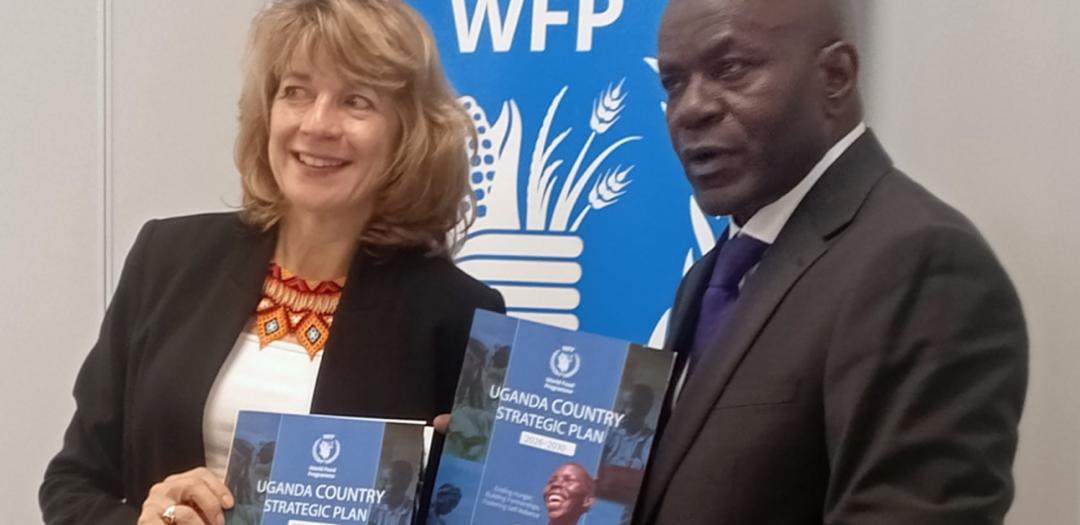The World Food Programme (WFP) is shifting its focus from emergency response to long-term solutions that empower communities and create pathways to self-reliance for both refugees and vulnerable Ugandans, according to WFP Country Director Lauren Landis .
Speaking at the launch of WFP’s five-year strategic plan in Kampala, Landis explained that the new approach is the result of extensive evaluation and consultation with stakeholders across Uganda.
“After a strong evaluation and a lot of participation at all levels from all of our stakeholders in Uganda, we looked at five possible shifts that we could make, and that’s what we put in the plan,” she said.
The plan is designed to integrate food systems, strengthen supply chains, and target the most vulnerable populations. Key priorities include expanding school feeding programs, improving nutrition, and supporting local farmer production.
“We’re hoping to look at less fragmented programming and more integrated food systems. In Karamoja, for example, we are connecting the school feeding programme with the production of local farmers, buying from local farmers, training mothers in nutrition, and strengthening supply chains all around,” Landis said.
A major shift in the strategy is moving from status-based assistance to targeted and prioritized support, focusing on those most in need, including refugees and new arrivals. The five-year strategic plan, costing USD 784 million (approximately Shs 2.85 billion)will support crisis response, resilience building, and the strengthening of local systems.
The WFP highlighted the success of its school feeding program, which has contributed to a 16% increase in school enrolment, a 71% rise in attendance, and a 92% improvement in student retention in schools receiving regular meals.
The Ugandan government has reaffirmed its commitment to ending hunger and fostering resilient communities. Permanent Secretary Alex Kakooza emphasized the importance of development partners supporting Uganda’s progressive refugee policy.
“We have nearly two million refugees. In Uganda, refugees are not confined to camps—they are welcomed into our communities, they farm, and build businesses alongside Ugandans,” he said.
Most refugees in Uganda come from war-affected countries including the Democratic Republic of Congo and South Sudan. However, last week, the government announced that it would stop granting refugee status to individuals from countries where peace has been restored, such as Somalia, Eritrea, and Ethiopia. This move comes amid shrinking donor support and growing numbers of new arrivals.
Through this new strategic approach, WFP aims to build sustainable food systems that empower communities, enhance local agricultural production, and ensure that vulnerable populations—including refugees—have access to nutritious food and the opportunity to thrive.


